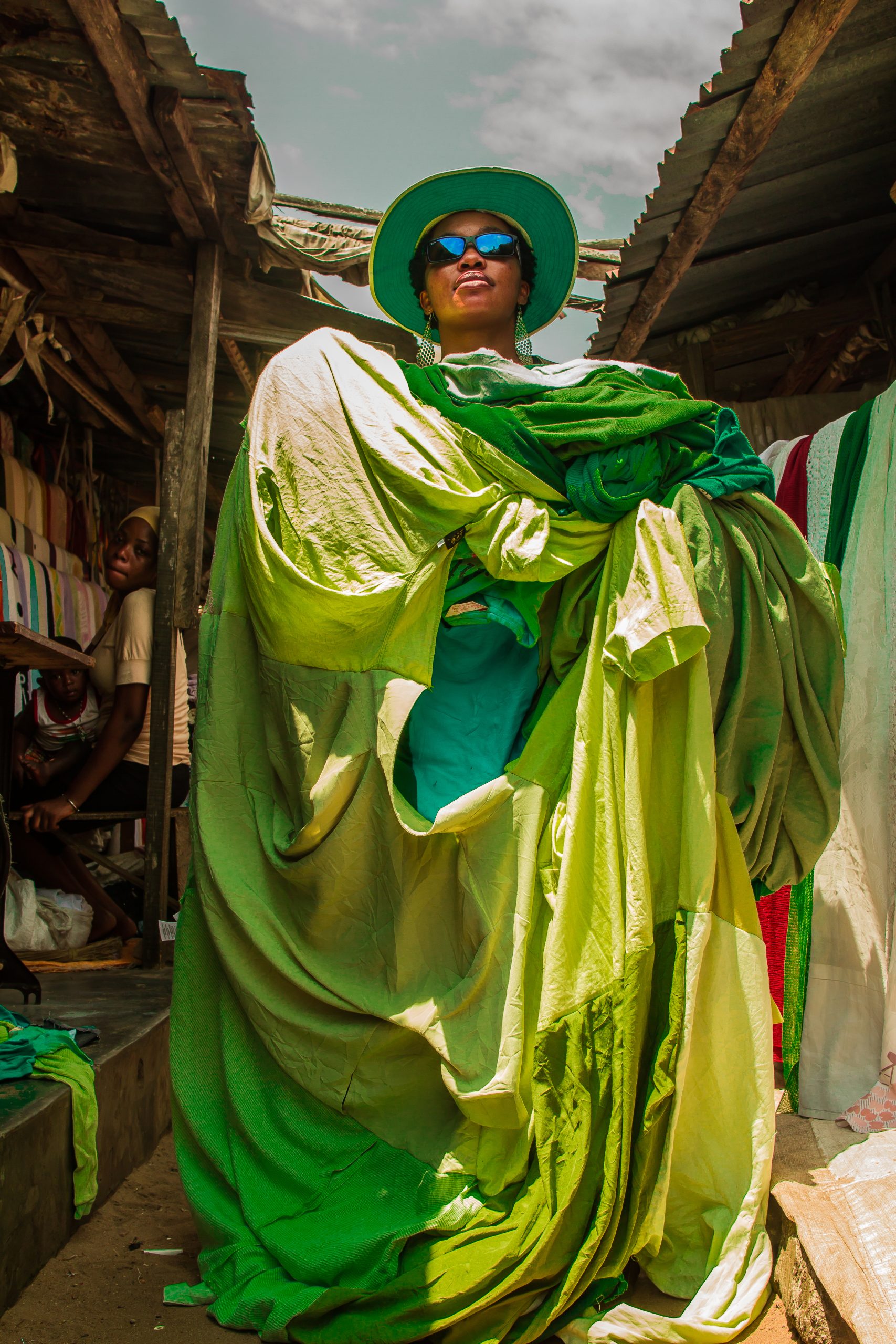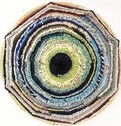Victoria-Idongesit Udondian, Interdisciplinary Artist

My work is driven by my interest in textiles and the potential for clothing to shape identity, informed by the histories and tacit meanings embedded in everyday materials. I engage with repurposed material to investigate how fundamental changes in fabric can affect one’s perception of his or her identity, and ultimately a nation’s psyche.
Coming from Nigeria, a country flooded with cast-off from the West, I began to explore, using the second-hand clothing industry as a starting point. I question how cast-off clothing and local consumption of foreign-made goods has impacted our cultural identity. I am interested in the materiality as well as the historicity of the second-hand clothing with which I work: how it travels the world from the West to the Global South, carrying the personal as well as social histories of the people involved in this economy, and how those histories begin to be complicated when others acquire the clothing and wear it. I explore this further by creating costumes or hybrid garments that weave traditional Nigerian and Western myths and narratives together. These costumes function as sculptural forms or get activated with bodies through still photos, or sometimes performances.
My work combines the use of various traditional modes of making which include weaving, ‘threading’, sewing, dyeing and sometimes digital media that stems from my cultural history and was learnt naturally while growing up in Nigeria. Combining this with contemporary art-making sensibility, I create large-scale sculptural elements and interdisciplinary projects that examines the intersection of immigration, labor, and global trade systems, raising questions about our postcolonial condition within an increasingly globalized world. Depending on the project, this interdisciplinary model of working is important, as my media choice is dependent on the one that best translates my idea.
My works are sometimes presented with an accompanying fictional historical context, in the form of a written narrative, a label. The text tells a historically plausible narrative, placing my work alongside a retelling of facts about Nigerian weaving, the patterns of the European clothing trade, anthropology, and colonialism, involving notions of provenance, origin and historical fact.
Recently, I have begun exploring exhibition-wide conceits in which, for example, I limit viewers’ access to a gallery via a simulated immigration interview or produce and exhibit works by my alter egos or fictional Nigerian artists or through collaborations with immigrant communities where I live. I am interested in how these strategies change how viewers interpret the objects they encounter, or in some cases, do not encounter. In traversing gallery spaces, who has access to which materials? When and under what circumstances? Controlled by whom and to whose benefit? Neither the conceptual framework nor the physical works seek to resolve these questions, but rather point to how we construct our identities, and how they determine our interactions with one another and our surroundings.


